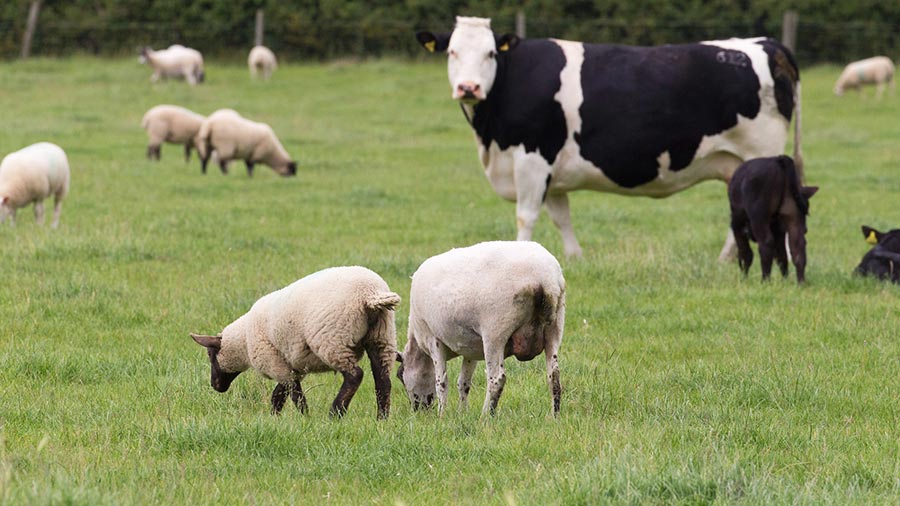Business Clinic: Should we take up SFI on mixed family farm?
 © Tim Scrivener
© Tim Scrivener Whether it’s a legal, tax, insurance, management or land issue, Farmers Weekly’s experts can help.
James Bradley of Carter Jonas Rural sets out how the SFI and other sources of funding might help a mixed farm.
See also: Business Clinic: Should I let land to a solar developer?
Q: We’re a traditional mixed family farm with 600 acres of combinable crops, 200 acres of grass, 400 ewes and a small suckler herd.
We’re still doing traditional cultivations, but know we should be looking at alternatives. With the Basic Payment Scheme (BPS) cuts starting to really bite from next year, how do you suggest we approach the SFI?
A: Your question echoes conversations I have been having with a number of clients recently.
Much about the Environmental Land Management scheme (ELM) and the future of agricultural policy is still emerging.
However, the phase-out of BPS and the introduction of the Sustainable Farming Incentive (SFI) are two things about which we know a reasonable amount.
BPS will reduce in value between now and 2027, when it will cease completely, so farmers should definitely be looking into how they could replace lost income.
Regarding SFI, two strands are coming into play imminently that will be available to all existing BPS claimants.
The two strands will relate to soil standards and payment rates have been confirmed at £22/ha, rising to £58/ha. An advanced level with higher payments rates is expected to be announced at a later stage.
While not relevant to your land type, there is also a fixed-sum moorland rate for SFI.
A funded annual animal health welfare review will also be introduced.
There will be a 10-week window to apply in 2022 and 2023. In future years application dates will be at six-monthly intervals with annual opportunities to amend agreements, adding land or options.
The first thing to note about the SFI is that you have nothing to lose by entering into it. Environmental critics of the scheme suggest that it doesn’t require much more than business as usual.
So, although the payment rates are not what farmers will be used to receiving under BPS, it’s not a huge undertaking.
The implications of the soil standards make good business sense and with a view to regenerative farming, changes to management practice should only be minor.
Defra will be learning from the early adopters and changing the scheme to ensure it is effective and creates environmental gains.
Farmers should engage with the system to ensure that it remains in place. If it is not used, we run the risk of it being withdrawn.
Additional funding for kit
It is important to look at additional sources of grant funding which can work alongside the SFI.
One option is Countryside Stewardship (CS). This is always worth considering – it has a full range of management options so most farm businesses will find something that could complement their operation.
There are 20,000 holdings involved with CS, but Defra would like 84,000 holdings to be involved in SFI by 2028.
CS would be potentially useful to provide management options which might support either marginal land or allowing a more sustainable system for individual crops or enterprises.
Provided that there is no element of double funding it should also be possible to enter into the SFI, perhaps on areas of the farm where CS options have not been used.
Additionally, the Farming Investment Fund has recently been launched, providing grants focusing on equipment, technology and transformation. The fund covers items including high-value equipment, such as a new direct drill.
The environmental benefits of direct drilling – such as less soil movement and increased fauna – are well known. For many, however, the initial outlay prohibits investment.
The grant could cover much of the overall cost of the new equipment, which may now make it a viable option, with the potential to provide more immediate returns.
However, where we see the real opportunities for farmers to generate income through environmental schemes is in collaboration with neighbours.
This is an area where much detail is still lacking, but it’s never too early to start talking to neighbouring farmers and making sure that you know who you could work with to make landscape-scale changes that could provide real environmental benefits and access to funds under local nature recovery and landscape recovery schemes.
In summary, there is no reason not to enter into SFI now, but make sure you’re also looking at other sources of funding, as well as preparing for the collaboration that will be required for the next phase of the ELM sheme. SFI alone will not balance the books post-BPS.
